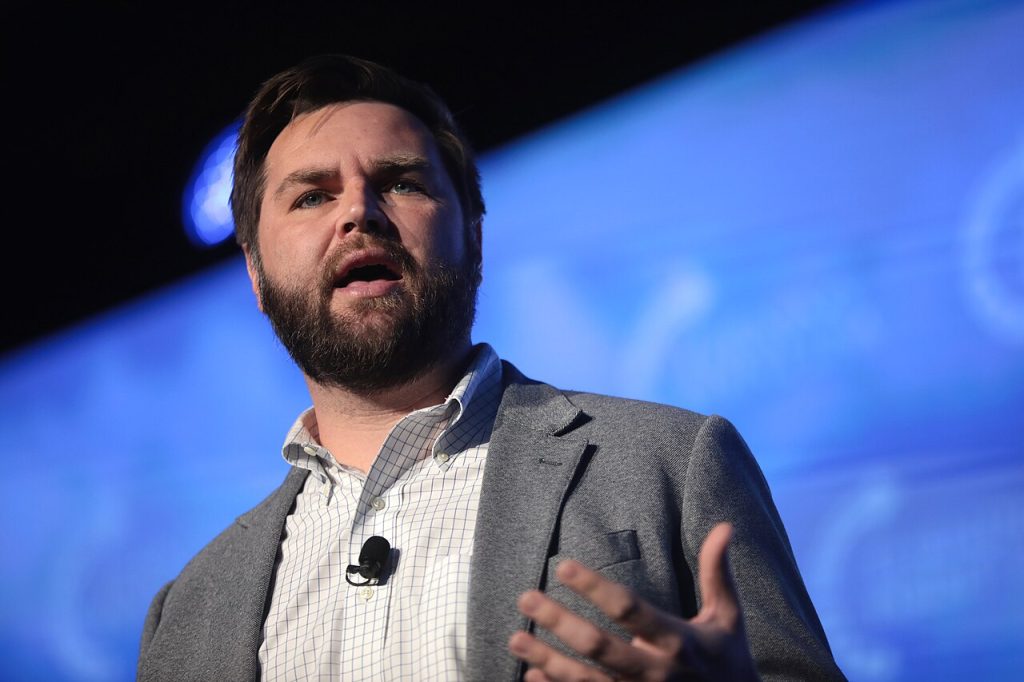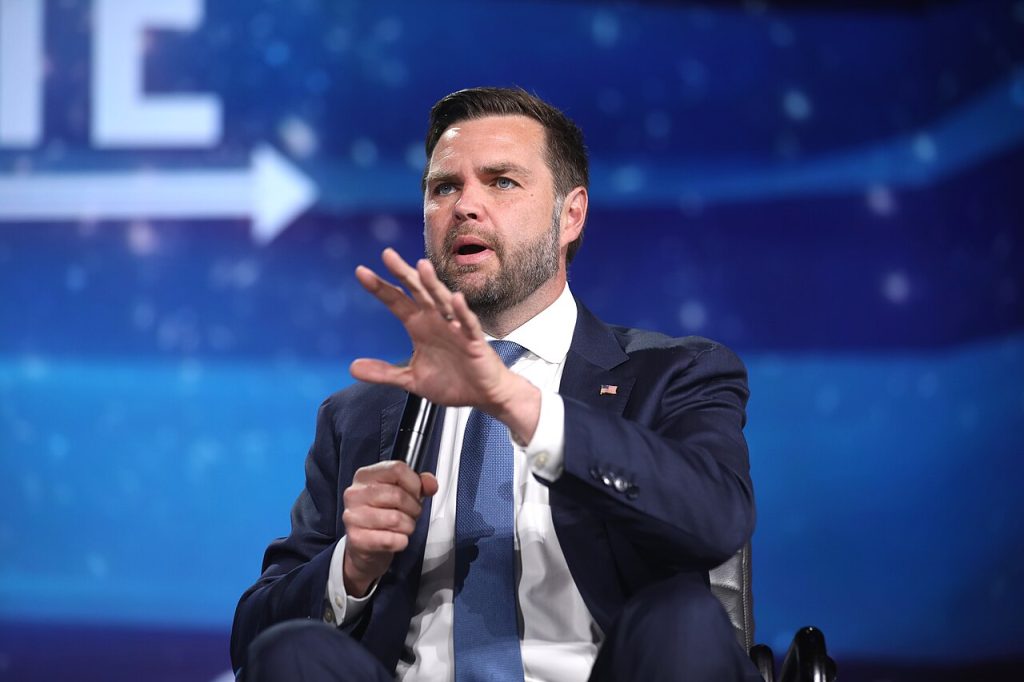Your cart is currently empty!
What Actually Happens If a US President Dies in Office as JD Vance Has ‘Strange’ Response About Trump’s Health

Vice President JD Vance’s recent comments about presidential succession have left political observers scratching their heads. His remarks about “terrible tragedies” and readiness to assume power sparked immediate debate across social media platforms. Critics called his phrasing “ominous” and “strange,” while supporters defended his prepared response to standard succession questions.
Behind these headlines lies a complex constitutional mechanism that has guided America through eight presidential deaths. Each transition tested the nation’s resilience and revealed gaps that lawmakers later addressed through careful amendments and legislation. Understanding these procedures becomes especially relevant as questions about presidential health capture public attention.
Recent visible signs of aging have prompted renewed discussion about succession protocols. Trump’s diagnosis with chronic venous insufficiency and visible bruising on his hands has intensified scrutiny of his physical condition. At 79, he holds the distinction of being the oldest person ever inaugurated as president, making health concerns particularly relevant for his administration.
JD Vance’s Comments Spark Succession Questions
Speaking with USA Today, Vance addressed questions about his preparedness to assume presidential duties. “I’ve had a lot of on-the-job training in the last 200 days, but the president is in incredibly good health. He’s got incredible energy,” the 41-year-old vice president stated. His choice of words immediately drew criticism from political commentators who found his phrasing unusual for a sitting vice president.
Social media users reacted with confusion and concern. One observer noted the peculiar nature of discussing hypothetical tragedies while serving as second-in-command. Another commenter suggested Vance was “foreshadowing” future events, though no evidence supports such speculation.
Vance continued his response by praising Trump’s work ethic, describing him as the last person to sleep and first to wake each day. However, his follow-up comment raised additional eyebrows: “If God forbid there is a terrible tragedy, I can’t think of better on-the-job training than what I’ve gotten in the last 200 days.” Critics argued that discussing potential tragedies in such detail was inappropriate for a vice president.
White House physician Sean Barbabella has described Trump as being in “good health” and “fully fit to execute the duties of Commander-in-Chief.” Despite medical reassurances, visible signs of aging continue to fuel public speculation about presidential fitness.
Eight Presidents Have Died in Office Throughout US History
American history records eight presidential deaths during active service, each marking a moment that tested constitutional procedures. Four presidents fell to assassins’ bullets: Abraham Lincoln in 1865, James Garfield in 1881, William McKinley in 1901, and John F. Kennedy in 1963. Four others succumbed to illness: William Henry Harrison in 1841, Zachary Taylor in 1850, Warren G. Harding in 1923, and Franklin D. Roosevelt in 1945.
William Henry Harrison’s death just 32 days into his presidency created the first constitutional crisis regarding succession. Vice President John Tyler faced uncertainty about whether he should assume full presidential powers or merely act as a caretaker. Tyler’s decision to take the complete presidential oath established a precedent that subsequent amendments later codified.
Lincoln’s assassination during the Civil War demonstrated how presidential death could threaten national stability during crisis periods. Andrew Johnson’s succession occurred at a moment when unified leadership was essential for national healing and reconstruction efforts.
Kennedy’s 1963 assassination shocked the world and created some of the most iconic images in American political history. His young son’s salute at the funeral became an enduring symbol of national grief and resilience. Jacqueline Kennedy orchestrated many personal touches during the funeral proceedings, sometimes clashing with officials who preferred strict adherence to military protocols.
Roosevelt’s death during World War II forced Harry Truman to assume leadership at a critical moment in global conflict. Truman faced immediate decisions about atomic weapons and post-war strategy that would reshape international relations for decades.
Constitutional Framework Provides Clear Succession Rules

Modern succession procedures rest on two key legal foundations: the 25th Amendment and the Presidential Succession Act of 1947. “In case of the removal of the President from office or of his death or resignation, the Vice President shall become President,” the 25th Amendment clearly states. Ratified in 1967, this amendment eliminated ambiguity that had plagued earlier transitions.
Presidential Succession Act of 1947, signed by Harry Truman, established a clear line beyond the vice presidency. Speaker of the House ranks third in succession, followed by the President pro tempore of the Senate. Cabinet members complete the order, beginning with the Secretary of State and continuing through other department heads.
Constitutional framers prioritized elected officials over appointed ones in the succession order. House Speaker and Senate President pro tempore both hold their positions through election, while Cabinet members serve at the president’s discretion. Military leaders remain excluded from civilian succession to preserve democratic governance principles.
Section 2 of the 25th Amendment addresses vice presidential vacancies, requiring the president to nominate a replacement who must receive majority approval from both Houses of Congress. Section 3 allows voluntary power transfer during medical procedures, while Section 4 provides mechanisms for involuntary transfer when the president becomes incapacitated.
Immediate Actions Follow Precise Emergency Protocols
Presidential death triggers a carefully orchestrated response designed to maintain government continuity. Vice presidents must take the presidential oath as quickly as possible, often within hours of the predecessor’s death. Location matters less than speed, as demonstrated when Lyndon Johnson took his oath aboard Air Force One following Kennedy’s assassination.
Communication protocols ensure key government officials learn of the transition immediately. Congress members, Supreme Court justices, and Cabinet officials receive direct notification before public announcements. White House Press Office coordinates public communication, usually through televised addresses that reassure domestic and international audiences.
Military command authority transfers automatically to the new president, ensuring no gap in national security leadership. Nuclear launch codes and other sensitive materials pass to the successor without delay. Secret Service protection expands to cover the new president’s family while maintaining security for the deceased president’s family during transition periods.
Administrative continuity requires immediate attention to prevent government paralysis. New presidents typically retain existing Cabinet members initially while planning longer-term changes. Staff transitions happen gradually to maintain institutional knowledge and operational effectiveness across executive departments.
Presidential Funerals Follow Elaborate State Traditions
Presidential funerals blend military honors with personal elements that reflect each leader’s life and legacy. Bodies typically lie in state at the US Capitol Rotunda, allowing public access for final respects. Citizens often wait hours in long lines to pass by the casket, demonstrating the personal connection many Americans feel with their presidents.
Military honors acknowledge the president’s role as Commander-in-Chief through elaborate ceremonies. A nine-member honor guard from various Armed Forces branches carries the flag-draped casket. Twenty-one gun salutes occur at precise intervals, with guns firing once per minute for 21 minutes. Three-volley salutes over gravesites follow ancient military traditions dating to Roman times.
Funeral services often take place at Washington National Cathedral, accommodating large gatherings of dignitaries. Current and former presidents attend alongside foreign leaders, Supreme Court justices, and congressional members. Family wishes influence ceremony details while maintaining appropriate state protocol.
Transportation methods have evolved with technology and personal preferences. Lincoln and Roosevelt traveled by funeral train, allowing citizens across multiple states to pay their respects as the trains passed through their communities. Modern presidents typically travel by aircraft, though some elements of train transport remain for symbolic purposes.
Burial locations reflect personal significance and family preferences. Many presidents rest at their presidential libraries, creating lasting memorials that combine education with commemoration. Arlington National Cemetery houses presidents like Kennedy, while others return to family estates or hometown cemeteries.
Historical Presidential Deaths Show Evolution of Mourning
Each presidential death reflected the media technology and cultural practices of its era. Harrison’s 1841 funeral established basic protocols but lacked the elaborate ceremonies that later became standard. Newspaper coverage was limited, and communication across the country took days or weeks.
Lincoln’s assassination created the first truly national mourning experience. Telegraph networks spread news rapidly, while his funeral train journey allowed unprecedented public participation. Millions of Americans viewed the train or attended local memorial services, creating shared grief experiences across geographic boundaries.
Garfield’s 1881 death received extensive newspaper coverage that detailed his suffering during the months between his shooting and death. Public sympathy for his prolonged illness created emotional investment in his survival that made his eventual death more impactful.
McKinley’s 1901 assassination introduced early photography and faster communication to presidential death coverage. Images of his funeral procession and ceremonies reached broader audiences than previous presidential deaths.
Kennedy’s 1963 assassination marked the first presidential death covered live on television. Millions watched events unfold in real time, from the initial shooting reports through the funeral proceedings. Television coverage created shared national experiences that earlier presidents’ deaths could not achieve.
Political Landscape Shifts Dramatically After Presidential Death

Presidential succession creates immediate political realignments that affect governance and policy direction. New presidents must establish legitimacy while honoring their predecessors’ legacies. Johnson faced this challenge after Kennedy’s assassination, balancing continuity with his own political vision.
Legislative dynamics change as Congress adapts to new executive leadership styles and priorities. Committee relationships, policy negotiations, and political alliances all require recalibration. Some initiatives gain momentum under new leadership, while others lose support or face redirection.
International relations demand careful management during transition periods. Foreign leaders assess potential policy changes and relationship adjustments. Alliance commitments require reaffirmation, while adversaries may test new leadership resolve.
Party politics complicate succession transitions, especially when policy differences exist between the president and the vice president. New presidents must maintain party unity while establishing independent leadership credentials. Campaign promises and political debts influence early decisions that set the administration’s tone.
Current Health Concerns Put Succession in Spotlight

Vance’s preparation comments reflect the reality that modern vice presidents must be ready for immediate succession. His emphasis on “on-the-job training” suggests awareness of the responsibility while attempting to reassure the public about continuity planning.
Constitutional procedures provide stability regardless of individual health concerns. Whether succession occurs through death, resignation, or incapacitation, established protocols ensure government continuity. Previous transitions demonstrate the system’s resilience during various crisis types.
Presidential mortality remains an inevitable reality that constitutional framers anticipated through careful succession planning. Eight previous transitions provide evidence of the system’s effectiveness while highlighting areas where procedures continue evolving to meet modern challenges.
